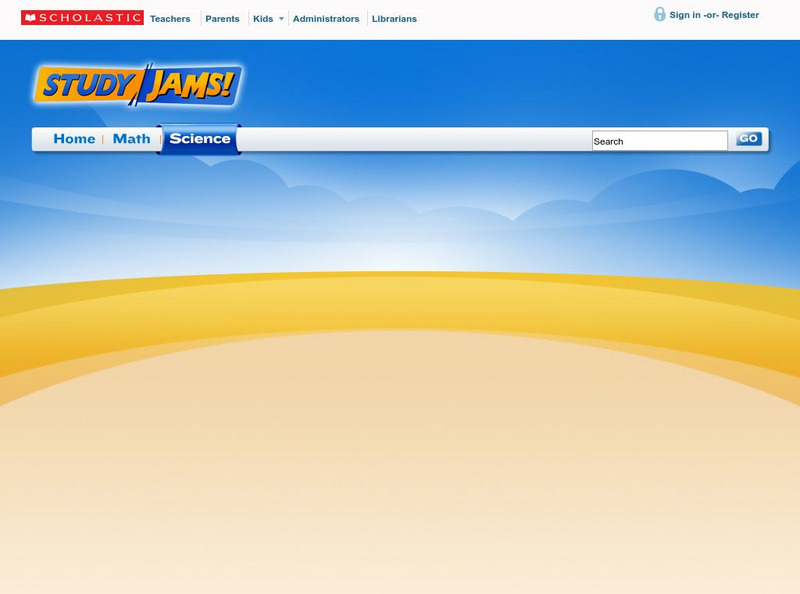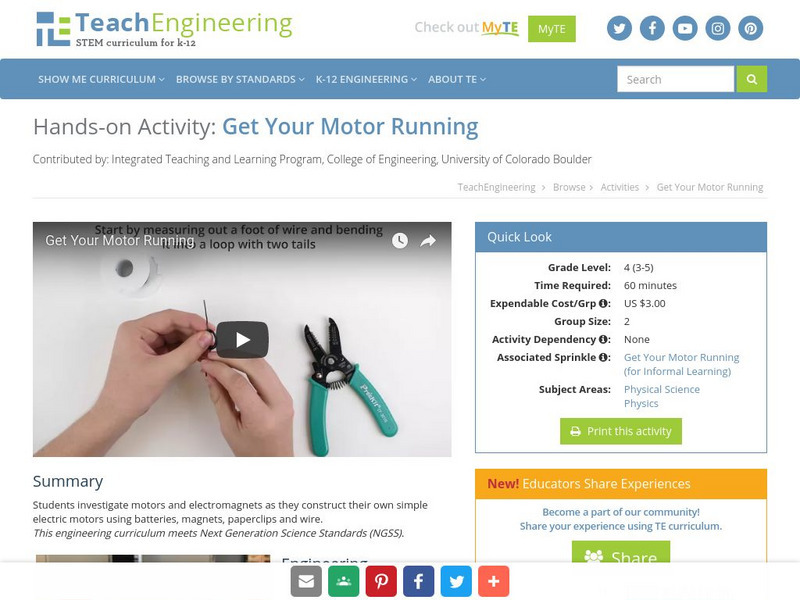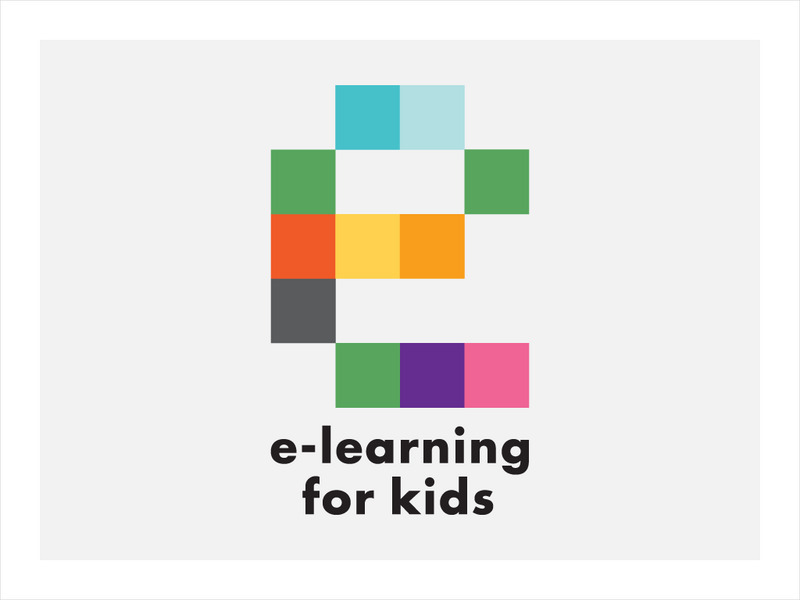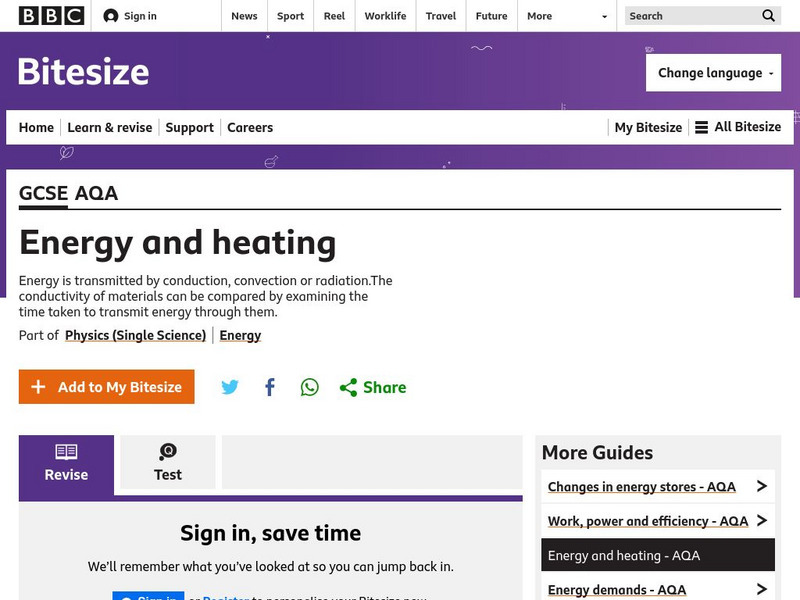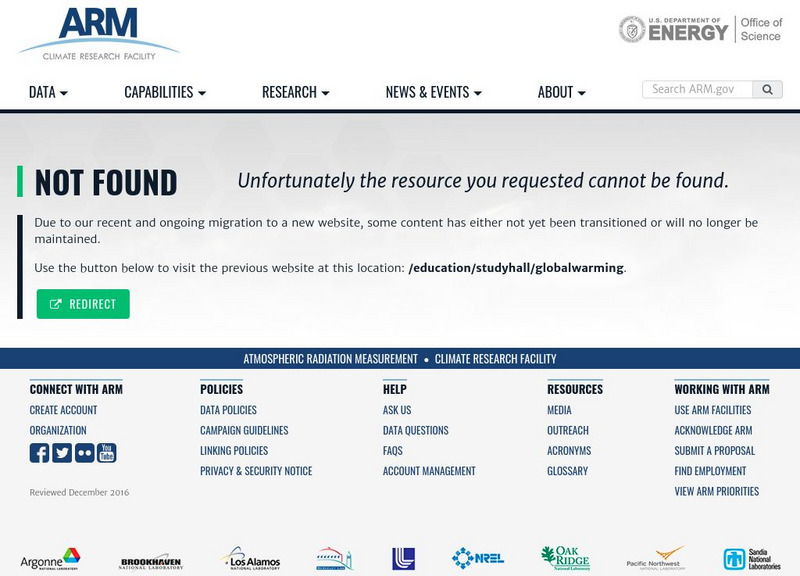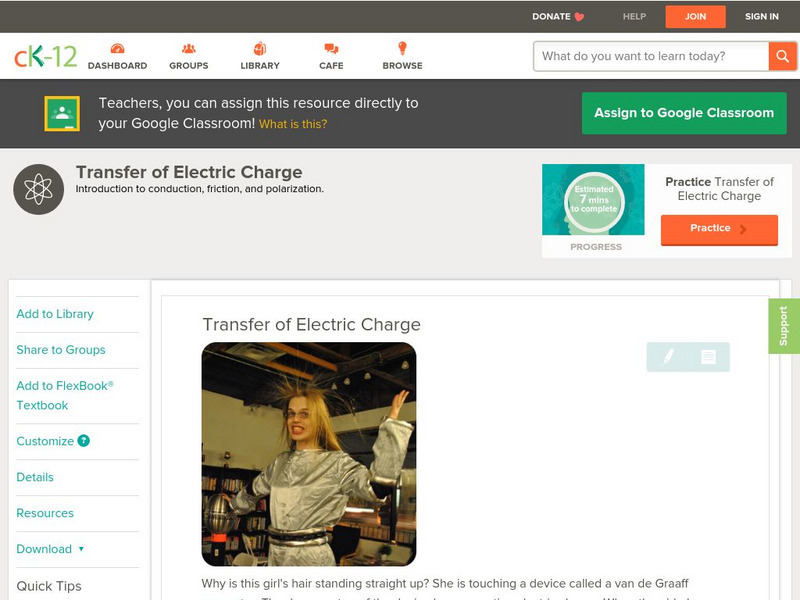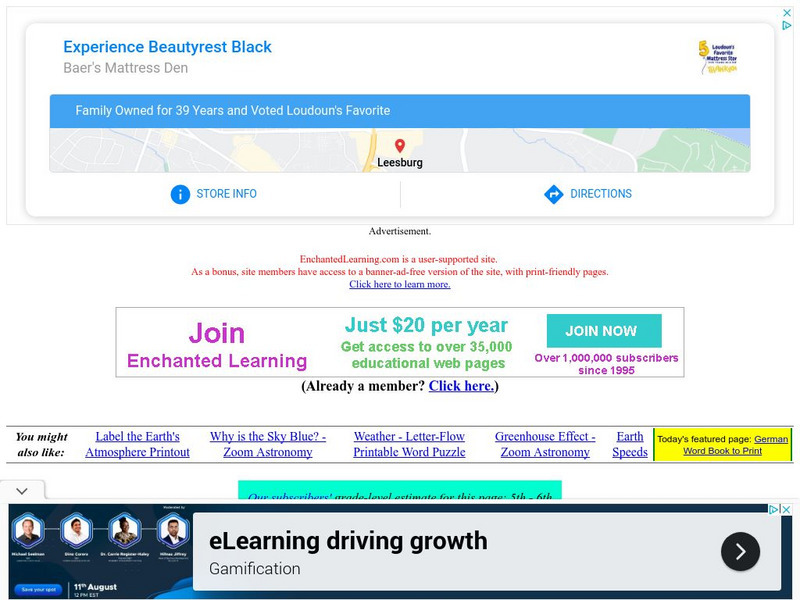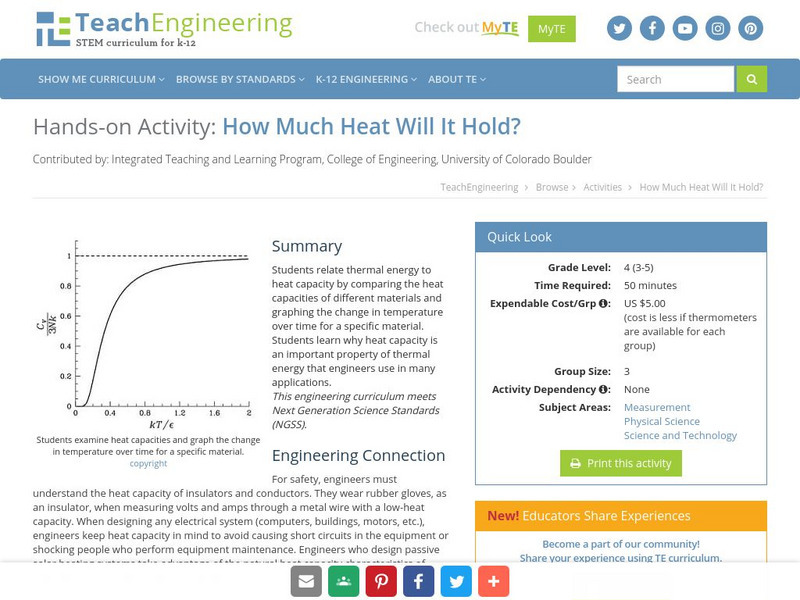Other
Fact index.com: Thermal Conductivity
Fact-Index.com offers an excellent site on thermal conductivity. Includes table of contents, hyperlinked terms, and formulas.
Scholastic
Scholastic: Study Jams! Science: Energy, Light and Sound: Heat
A video and a short quiz on heat, covering its difference from temperature, thermal energy, and the means by which heat is transferred.
University Corporation for Atmospheric Research
Ucar: Atmospheric Processes Conduction
This simple demonstration helps students understand the concept of conduction. Site includes background information, images, and lesson plans outlining the demonstration of conduction.
TeachEngineering
Teach Engineering: Get Your Motor Running
Students investigate motors and electromagnets as they construct their own simple electric motors using batteries, magnets, paper clips and wire.
TeachEngineering
Teach Engineering: How Hot Is It?
Students learn about the nature of thermal energy, temperature and how materials store thermal energy. They discuss the difference between conduction, convection and radiation of thermal energy, and complete activities in which they...
BBC
Bbc Schools: Ks2 Bitesize: Science: Materials: Heat
A short, illustrated tutorial about how heat energy moves. After reading the material, take a quick quiz to check for understanding.
E-learning for Kids
E Learning for Kids: Science Underwater City: What Are Good and Poor Conductors of Heat?
John and Jessi are going underwater, and they need to stay warm. Help them learn about conductors of heat so they can stay warm.
eSchool Today
E School Today: Electricity
Explore current electricity and different types of electric circuits.
BBC
Bbc: Gcse Bitesize: Energy and Heating
Energy is transmitted by conduction, convection or radiation.The conductivity of materials can be compared by examining the time taken to transmit energy through them. This lesson explains how conduction works and provides a link to a test.
PBS
Pbs Kids: Conduction Countdown
PBS offers an experiment that kids can do at home to learn more about heat conduction and how it works.
Other
Arm Program's Education Center: Global Warming
An all purpose site with something for everyone. Learn about global warming and climate change, ask a scientist, take a quiz, or get a lesson plan!
CK-12 Foundation
Ck 12: Physical Science: Heat Conduction
[Free Registration/Login may be required to access all resource tools.] Investigates what conduction is, how it works, and gives examples of conduction.
Project Britain
Primary Homework Help: Electricity Questions
Brush up on electricity facts before taking this interactive quiz. Students can get immediate feedback by checking the answers after each question.
CK-12 Foundation
Ck 12: Physical Science: Transfer of Electric Charge
[Free Registration/Login may be required to access all resource tools.] Transfer of electric charge: transfer of electrons, conservation of charge and three ways electric charge can be transferred.
OpenSciEd
Open Sci Ed: Unit 6.2 Thermal Energy
This unit on thermal energy transfer begins with students testing whether a new plastic cup sold by a store keeps a drink colder for longer compared to the regular plastic cup that comes free with the drink.
OpenSciEd
Open Sci Ed: Net Logo: Conduction in Solids Full (Fixed)
This simulation shows conduction of thermal energy within and between solids, based on the kinetic energy of particles, and collisions between neighboring particles.
OpenSciEd
Open Sci Ed: Net Logo: Conduction in Solids Reduced
This simulation shows conduction of thermal energy within and between solids, based on the kinetic energy of particles, and collisions between neighboring particles.
Khan Academy
Khan Academy: Dielectrics Article
This article from Khan Academy provides information about dielectrics. This information is intended for the Class 12 Physics Course (India).
Enchanted Learning
Enchanted Learning: The Earth's Atmosphere
The Earth's atmosphere is a thin layer of gases that surrounds the Earth. It composed of 78% nitrogen, 21% oxygen, 0.9% argon, 0.03% carbon dioxide, and trace amounts of other gases. This thin gaseous layer insulates the Earth from...
Smithsonian Institution
National Museum of Natural History: American Mammals: Arctic Fox
An animal that does not begin to shiver until temperatures reach -70 C, the arctic fox is one of the most superbly cold-adapted mammals. Its dense, multi-layered coat, which is several inches thick during winter, provides excellent heat...
Smithsonian Institution
National Museum of Natural History: American Mammals: Bowhead Whale
Bowheads live in icy Arctic seas. A smooth back with no dorsal fin, a blowhole placed in a high crown at the top of the head, and a thick layer of blubber for insulation equip them for this environment. Learn more about the Balaena...
Science4Fun
Science4 Fun: Resistors, Capacitors, and Inductors
Electric circuits are used to provide a path to electric current. They commonly use three basic electrical components, which are resistors, capacitors, and insulators. They affect the electric current and changes the behavior of the...
Science Education Resource Center at Carleton College
Serc: Lighting the Way: Electrical Circuits and Lamp Wiring
Through a series of self-guided activities, students will explore basic electrical circuits and then build a working model of a circuit through the process of wiring a lamp. They will understand the flow of electrons through a circuit,...
TeachEngineering
Teach Engineering: How Much Heat Will It Hold?
Students relate thermal energy to heat capacity by comparing the heat capacities of different materials and graphing the change in temperature over time for a specific material. Students learn why heat capacity is an important property...
Other popular searches
- Conductors and Insulators
- Conductors Insulators
- Conductor Insulators
- Thermal Insulators
- Best Insulators
- Science Thermal Insulators
- Heat Insulators
- Water Temperature Insulators
- Conductors Insulators Heat
- Insulators Ice Cube
- Good Insulators
- Conductor and Insulators



